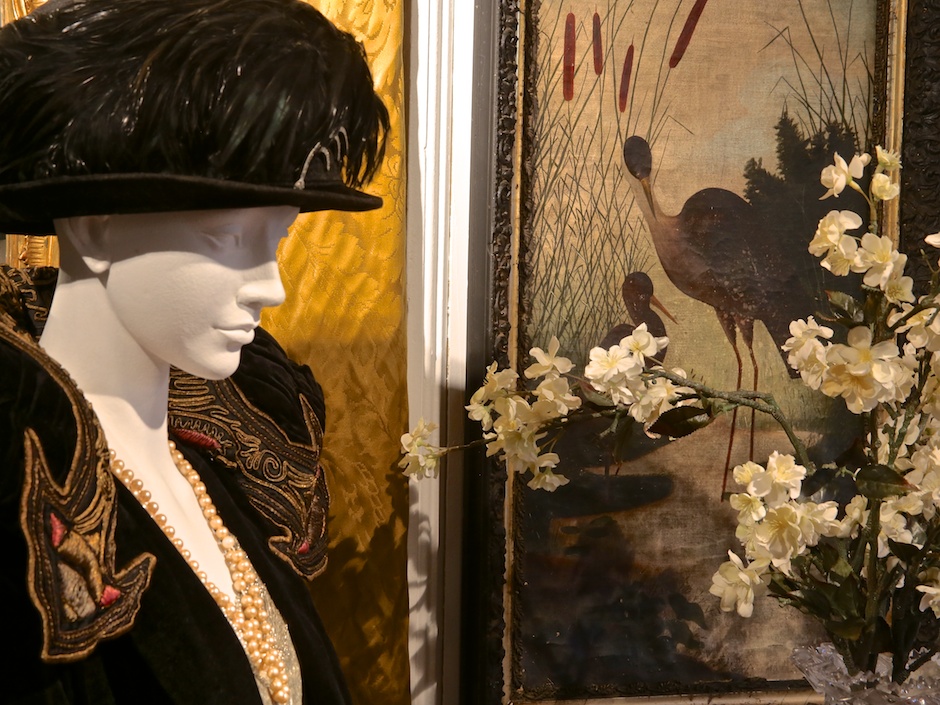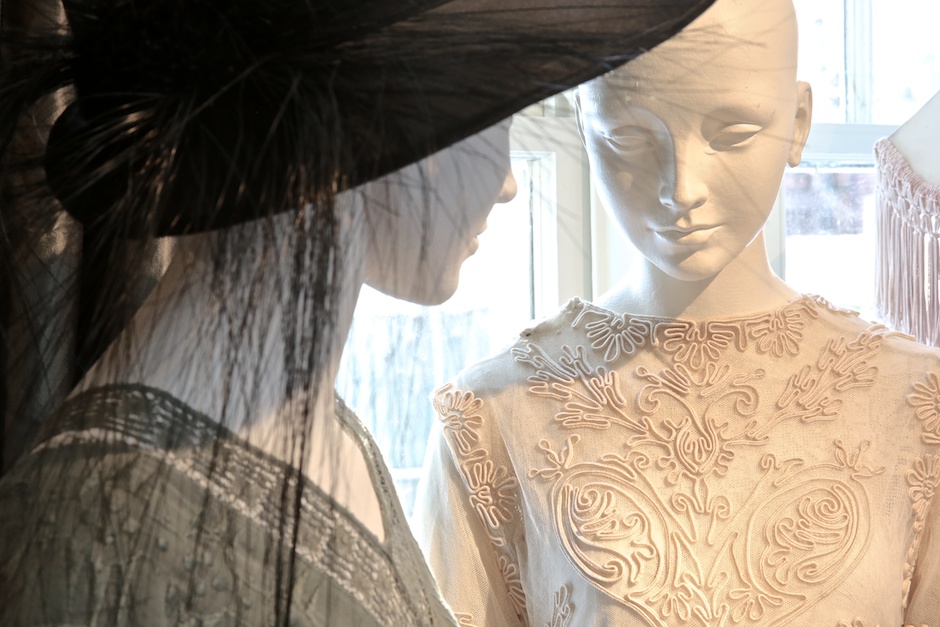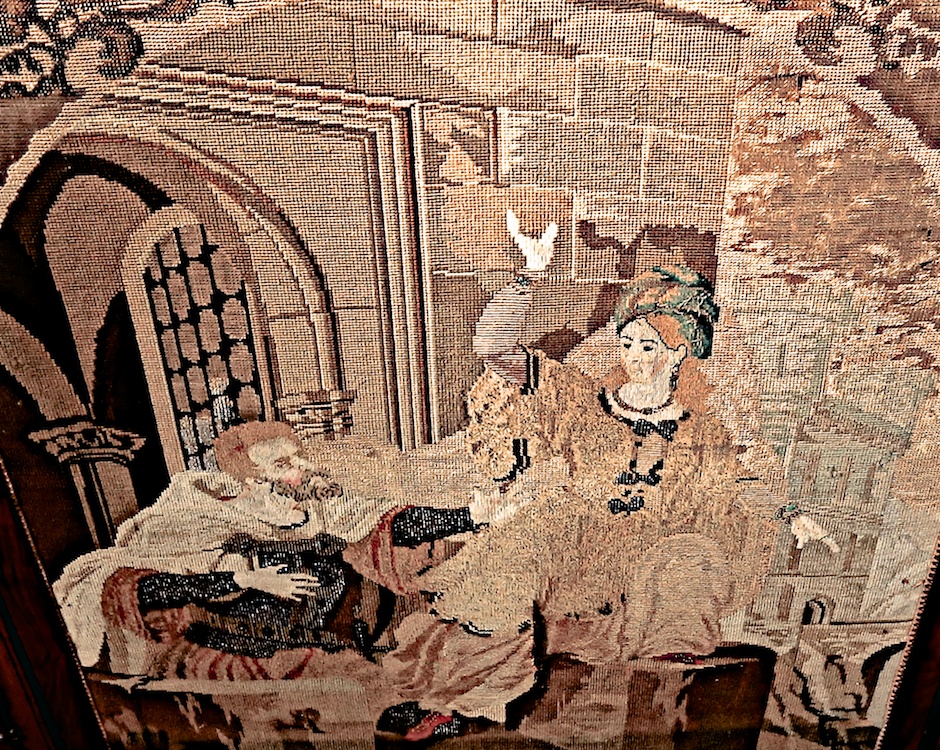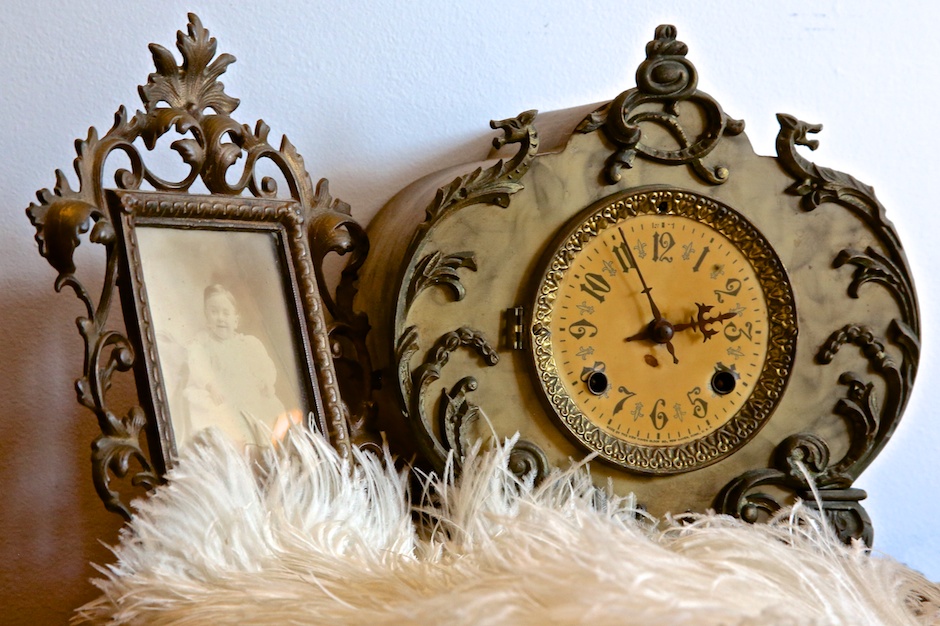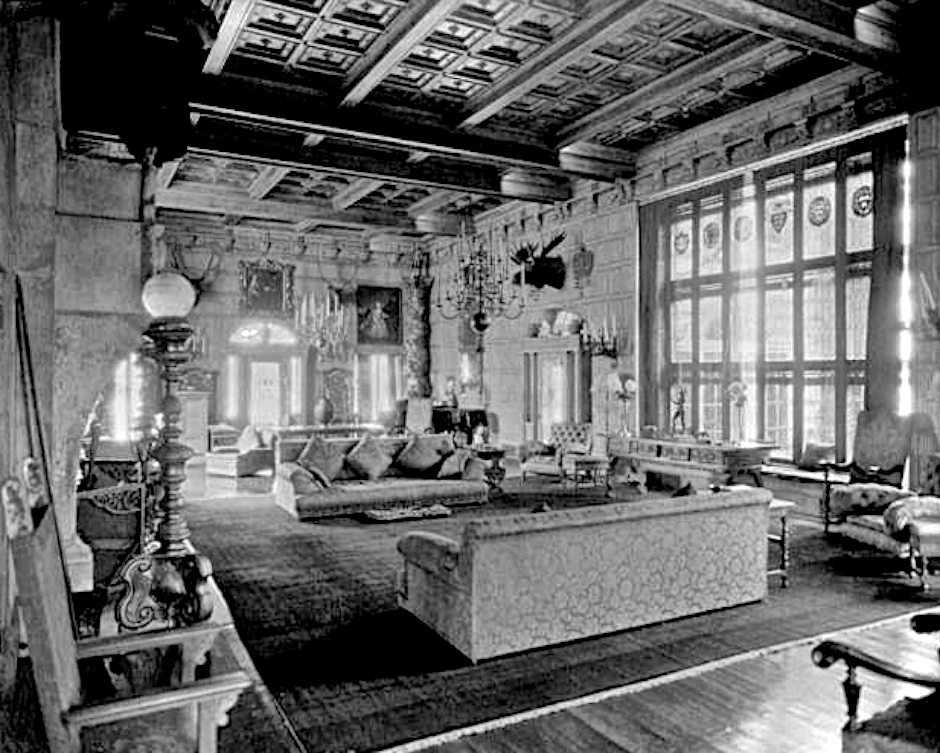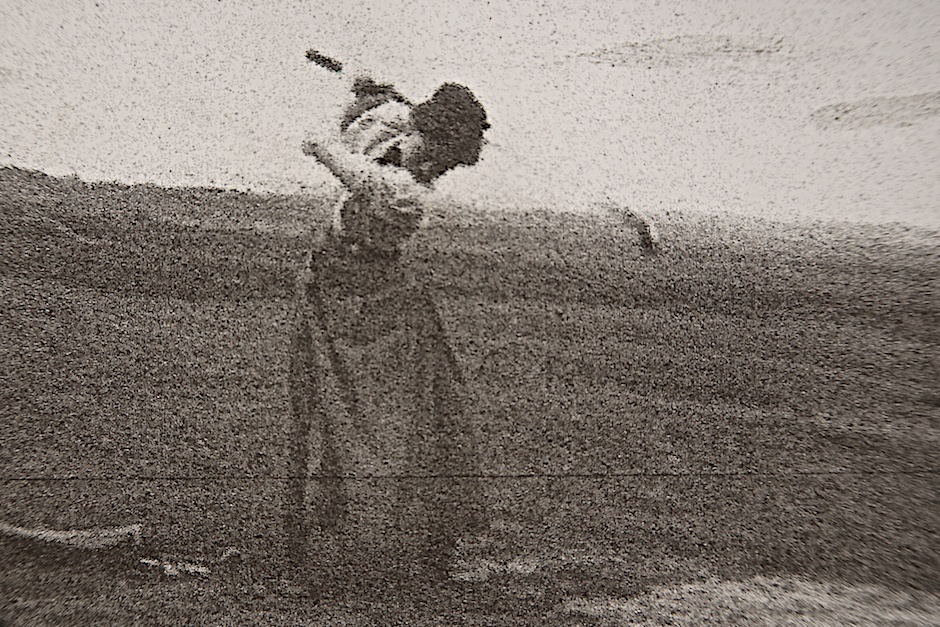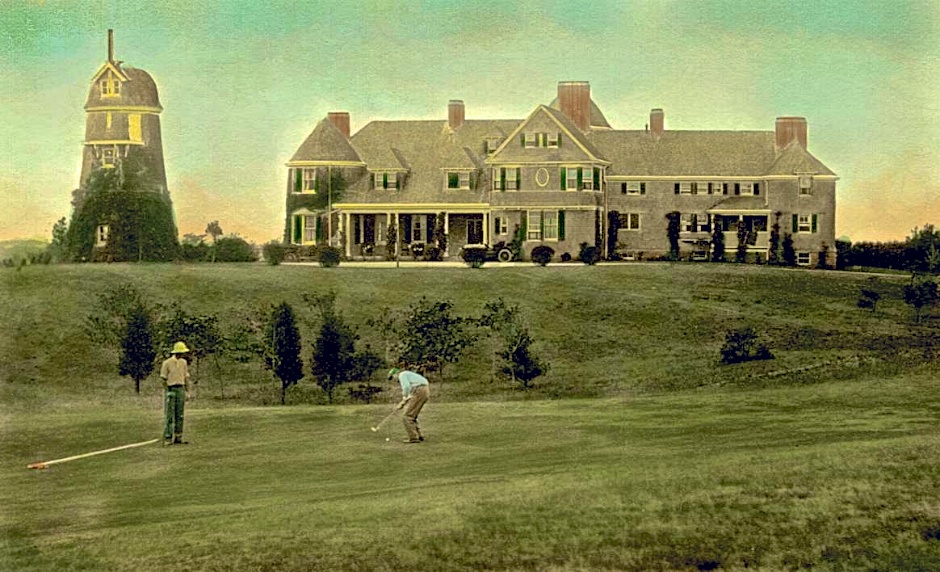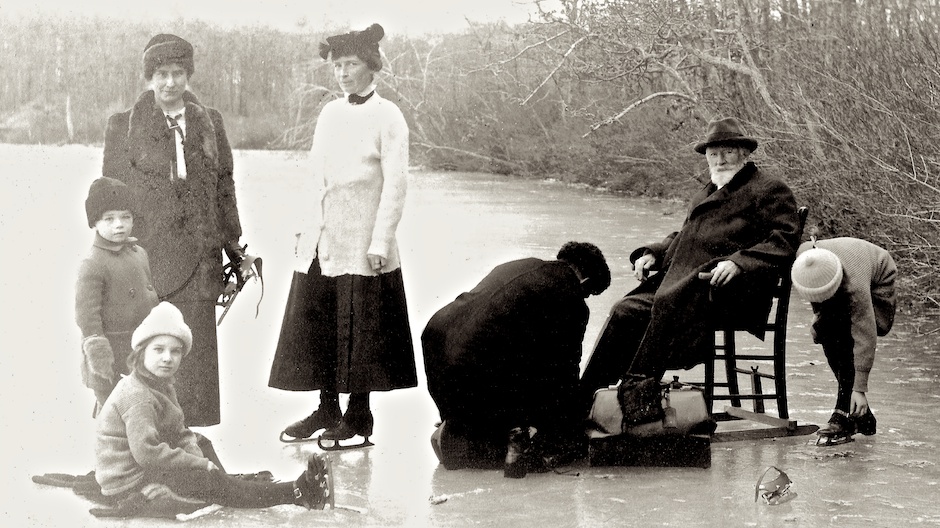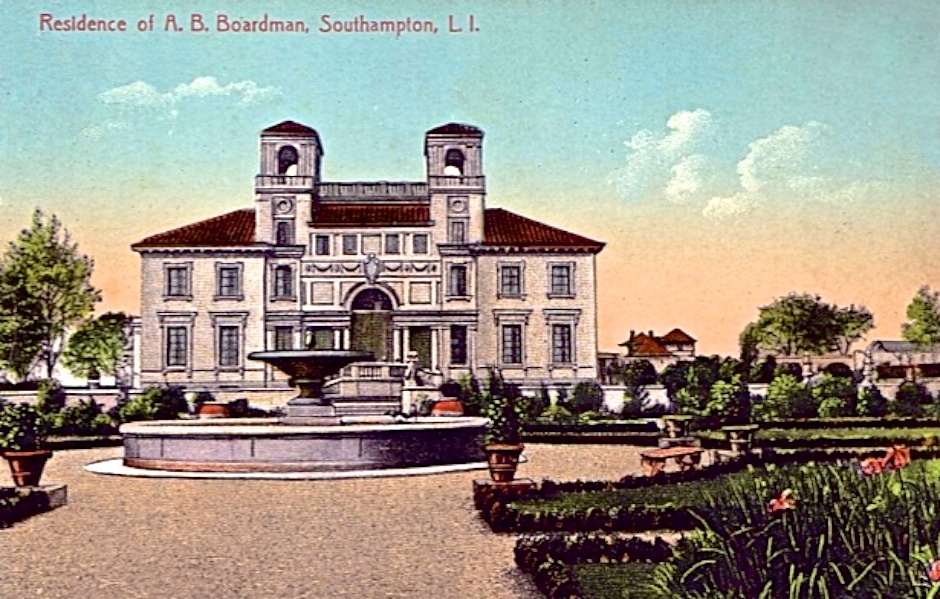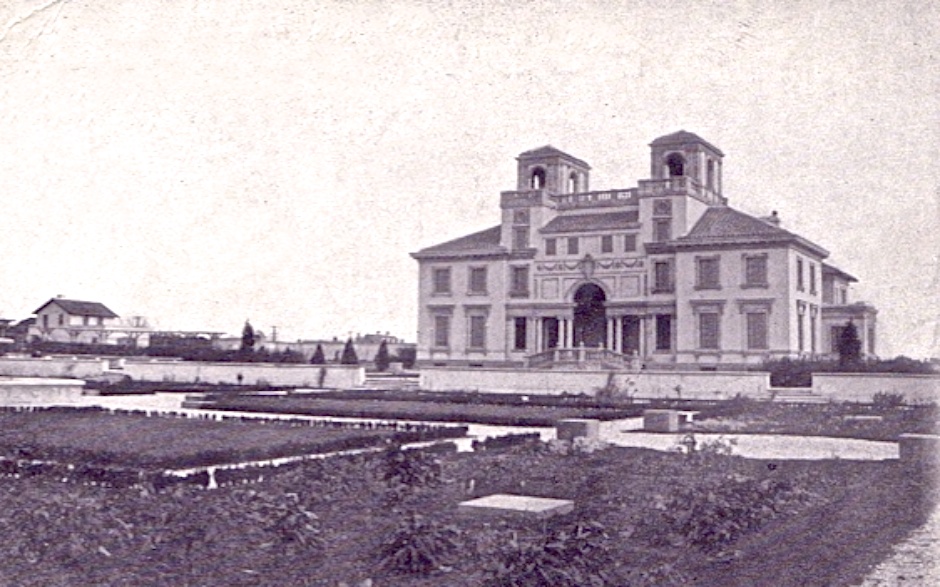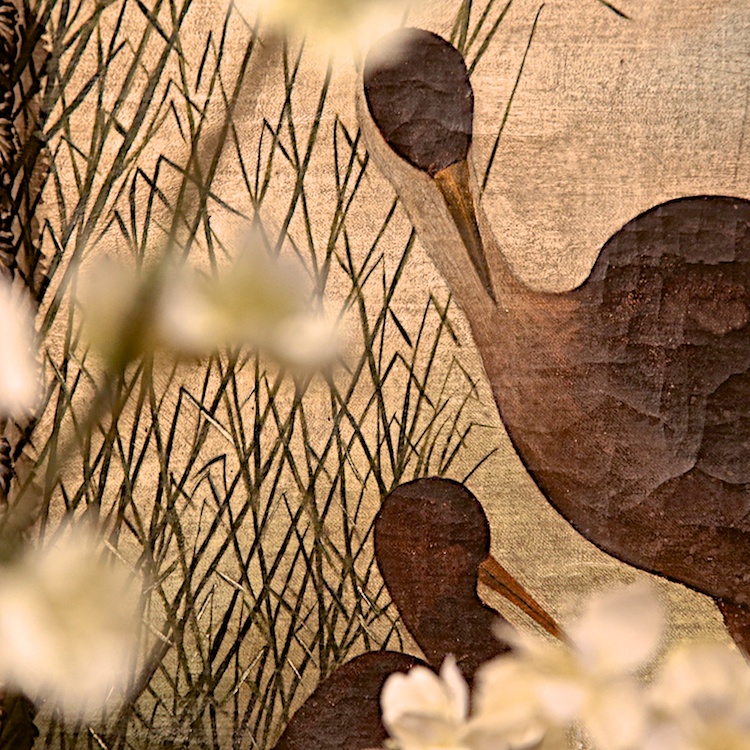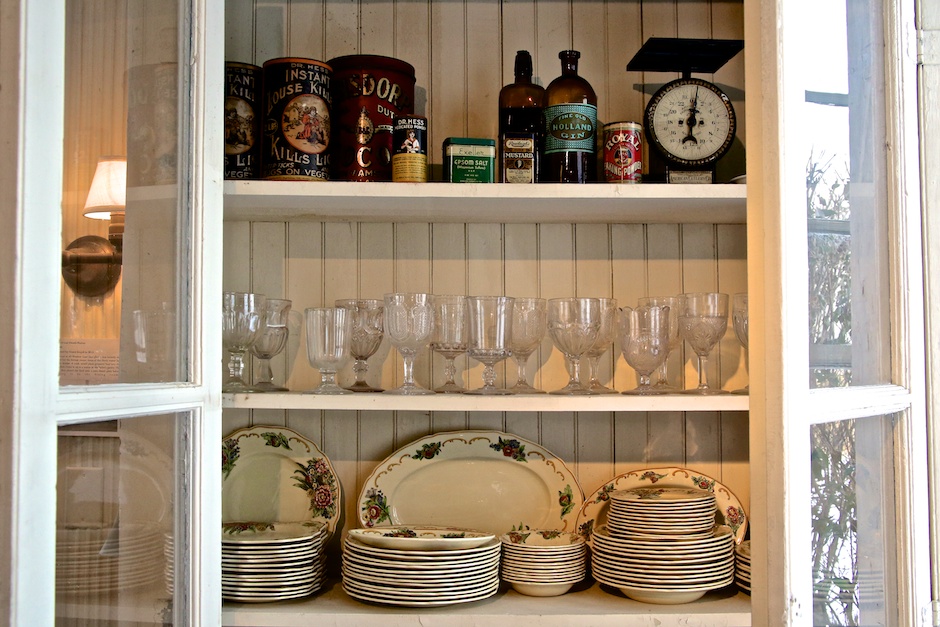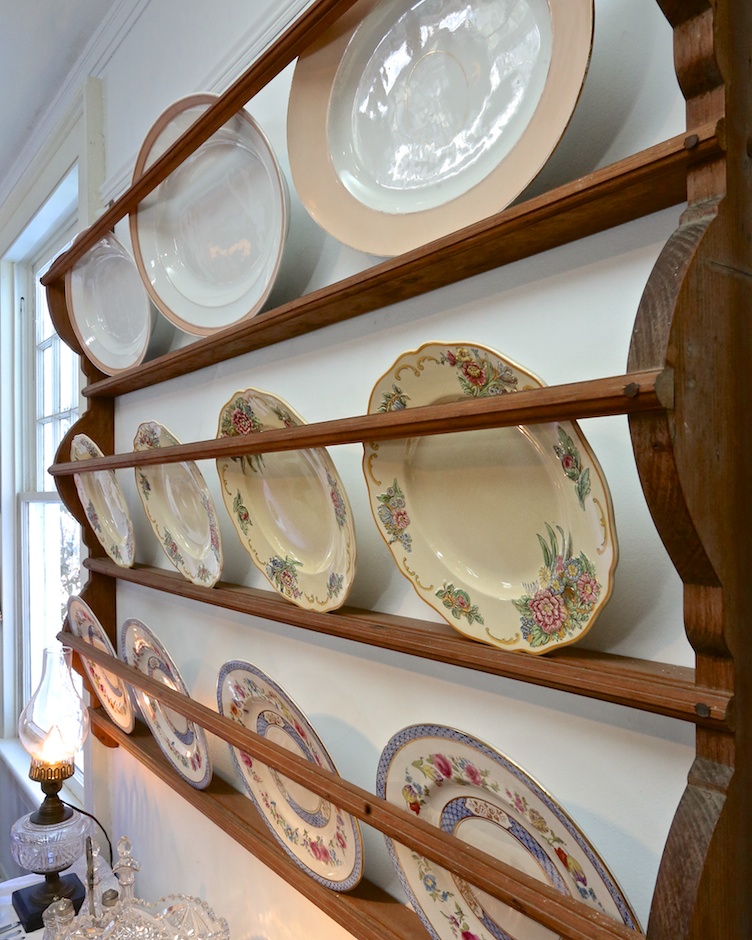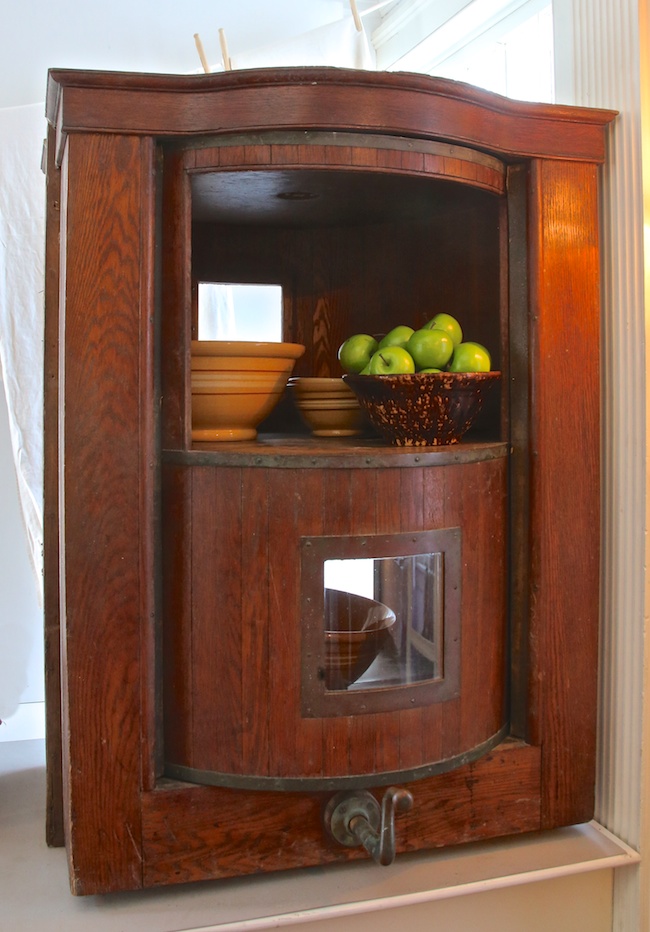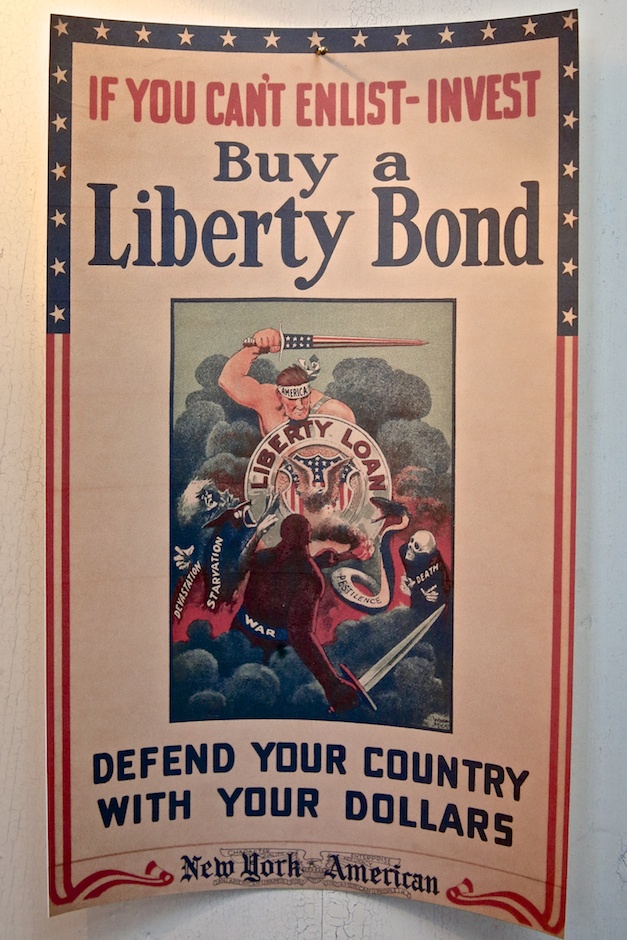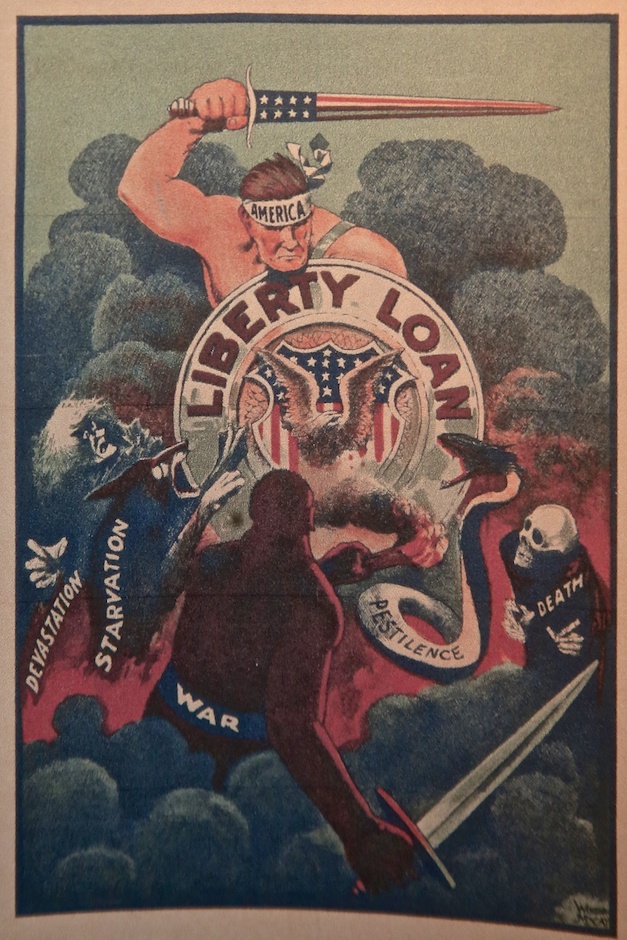Downton Abbey Style in Southampton
1900 to 1920
EXHIBIT CLOSED 2014
Exhibit: February 5 — April 26, 2014
When the Long Island Rail Road was extended to Southampton in 1870 bringing an influx of summer visitors seeking a quiet and wholesome rural refuge from the heat and turmoil of city life, that is exactly what they found. In the decades that followed, the very name Southampton came to connote a world of debutantes, yachts, magnates and mansions. Seasonal residents who arrived in Southampton for the summer in the early years of the 19th century often brought with them ten or more servants and trunks laden with ball gowns, “sportswear” (ladies’ bloomers for bicycling, scarlet blazers for golfers), china, crystal and all the necessities for high-style entertaining.
The long golden days of summer were devoted to morning swims in the surf or Lake Agawam, afternoon tennis at the Meadow Club and evening gatherings carefully orchestrated and managed by household servants. On weekends, they dressed to the nines to dance at the Meadow Club where powder and powder puffs were supplied in the “powder room” and a ladies’ maid was assigned to any woman availing herself of the club’s overnight guest rooms. Sundays found them tending to their spiritual needs at the picturesque St. Andrew’s Dune Church and witnessing the wonder of the Betts family gondola, paddled by four footmen, crossing the lake to deliver Mrs. Betts to the church.
For the lucky few, there was no limit to the delights of a Southampton summer in those years of peace and prosperity when elegance and extravagance were the birthright of the privileged.
— Introduction to the Exhibit
Styles and activities during Southampton’s Gilded Age, beginning in1880 and ending in 1929, mirror the television historical drama “Downton Abbey.” This exhibit documents the fashions, activities and lifestyle of this community between 1900 and 1920 that changed Southampton forever.
— Visual Presentation Based on the “Downton Abbey Style” Exhibit at the Rogers Mansion —
__________________________________
__________________________________
__________________________________
__________________________________
In the grand households candles flickered, crystal sparkled and the silver was polished to a high shine for dinner parties featuring 13-course meals that might start with chestnut soup and end with pear croquettes but would never, ever omit the oysters.
” SONORA: The Instrument of Quality. Clear As A Bell. Highest Score For Tone At Panama-Pacific Exposition of 1915.”
With the advent of the Victrola, upper-class entertaining no longer required hiring musicians or performing oneself. The voice of Enrico Caruso could be played for guests or the rug could be rolled up and put aside for dancing one of the popular “animal dances” — the Turkey Trot (otherwise known as the bunny hug or the grizzly bear) or, even more popular after 1914, the Fox Trot.
__________________________________
Samuel Longstreth Parrish by Hermon A. MacNeil.
Samuel Parrish, a wealthy New York attorney, made Southampton his adoptive home at the end of the 19th century and became one of its most active citizens and generous benefactors until his death in 1932. During the boom years at the dawn of the 20th century, he was involved in every major civic project. He donated land for Southampton Hospital, helped to establish the Rogers Memorial Library, served briefly as village president (mayor) and founded the Parrish Art Museum, which he considered his crowning achievement. He commissioned Stanford White to design a house for his mother on First Neck Lane and made many improvements to the Rogers Mansion, which was his home from 1899 until his death.
__________________________________
—————————————————————————————————————————————————————–
——————————————————————————
The Birdcage
Dr. T. Gaillard Thomas is credited by many as the founder of the Southampton summer colony. A prominent New York City physician, he was enraptured by Southampton’s leafy village streets, farm fields and pristine beaches when he first visited the area. He built the first summer cottage, known as The Birdcage, on the beach in 1877, and he remained a community leader until his death in 1903.
The Orchard, c. 1906
In 1895, wealthy financier James Breese bought property on Hill Street and commissioned the master architectural firm of McKim, Mead & White to design a colonial revival home that was modeled after George Washington’s Mount Vernon. The result, a seemingly simple Colonial home, but with ocean views, sweeping gardens, and 35 rooms.
“The Orchard, now renamed Whitefield in honor of its architect, Stanford White, remains the crown jewel of Hill Street and has frequently been cited as an excellent model for the adaptive reuse of former estate properties.” — Houses of the Hamptons, 1880-1930, by Gary Lawrance and Anne Surchin.
——————-
The Music Room of The Orchard
On October 9, 1915, Frances “Tanty” Breese married Lawrence McKeever Miller in the Music Room of The Orchard, the Breeze family home on Hill Street. On the same day, her brother Robert and Beatrice Claflin were married at St. Andrew’s Dune Church. The double wedding and the joint reception that followed at The Orchard had society buzzing in Southampton, New York and beyond. The light from huge candles cast a medieval glow over the elaborate Music Room as Tanty, a former tomboy who would one day abandon conventional married life for a creative career, approached the altar on the arm of her father, James Lawrence Breese.
Helen Parrish
Helen Parrish was Southampton’s golden girl of the Gilded Age. James Cresson Parrish’s only daughter, she was also a favorite niece of her childless uncle, Samuel Parrish. “Honeysuckles,” the charming Art Village cottage on Briar Lane, was built for Helen by her Uncle Sam. She was also a talented golfer and was often seen at the Shinnecock Hills Golf Club playing a round. The good times she enjoyed with the fashionable bohemians of William Merritt Chase’s Shinnecock Hills Summer School of Art (see below) were matched by the upper-class pleasures of city society and European travels.
Residence of James Cresson Parrish, Samuel Parrish’s brother, located approximately where the Southampton College gymnasium was built.
James Parrish Ice Skating Party.
Students of William Merritt Chase’s Summer School of Art (1891-1902) painting outside in Southampton. The Summer School was located in the Art Village at the western fringe of Southampton Village that to this day remains a charming enclave.
————————–
Ville Mille Fiori, c. 1910
In 1910, attorney Albert Barnes Boardman commissioned the architectural firm of Hill & Stout to design a palatial estate for his family at the intersection of Great Plains Road and Coopers Neck Lane. The result, modeled after Rome’s Villa de Medici, met Boardman’s expectations, and then some.
“Of all the fantastical dwellings that have risen in the Hamptons over the years, the sumptuous Southampton estate of Albert Boardman was among the most distinctive. Known as Villa Mille Fiori, “house of a thousand flowers,” it embodied everything that a summer mansion in the sand could be, a Beaux-Arts colossus in a prime, highly visible location.” — Houses of the Hamptons, 1880-1930, by Gary Lawrance and Anne Surchin.
——————————————————————————
—————————————————————————————————————————————————————–
__________________________________
__________________________________
Butler’s Pantry
Keeping a complex Gilded Age household running smoothly was a job that fell squarely on the shoulders of the Butler. Downstairs he was the unbending authority figure; upstairs he was the dignified presence who could provide whatever was needed. The Butler’s Pantry was his undisputed terrain.
Cylindrical Dumb Waiter, c. 1880.
The house at 40 Meadow Lane was recently demolished but the former owner donated this dumb waiter before the demolition. A cook would place prepared food into the drum then rotate it on to a waiter in the Butler’s Pantry. The waiter then placed the food onto a nice dinner plate before serving it in the dining room.
__________________________________
Laundry
Perhaps the hardest job on a large estate was that of the laundress who spent her days up to her elbows in punishing hot water. Vigorous scrubbing, heavy lifting, ironing, tedious folding — all to be repeated the following day.
===================================================== ========================
World War, July 28, 1914 — November 11, 1918
=========================================================
DOWNTON ABBEY STYLE IN SOUTHAMPTON, 1900 — 1920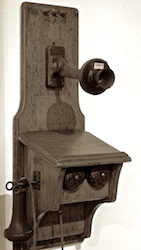
Exhibit at the Rogers Mansion
Southampton Historical Museum
February 5 — April 26, 2014
Emma Ballou, Curator & Registrar at the Southampton Historical Museum
————–
Exhibit Closed
—————————————————-
Introduction & captions courtesy of the Southampton Historical Museum.
www.southamptonhistoricalmuseum.org
—————————————————————————————-
Visit these AAQ Links:
AAQ Resource / Books — Houses of the Hamptons, 1880 – 1930, Gary Lawrance & Anne Surchin
AAQ Articles / Retrospective — Shinnecock Summer School of Art: The Art Village, by Anne Surchin
AAQ Portfolio / Preservation — Southampton Walking Tour
AAQ Portfolio / Preservation — Woodward: Local Postcard Sampling
AAQ Landmarks — Rogers Mansion, 1750 – 1926, Southampton
AAQ Landmarks — Rogers Mansion Museum Complex, Southampton
AAQ Landmarks — World War Memorial, Lake Agawam Park, Southampton
——————————————————————–
Photographs, except archival & postcard images/Copyright, Jeff Heatley.
__________________________________________________________________________

